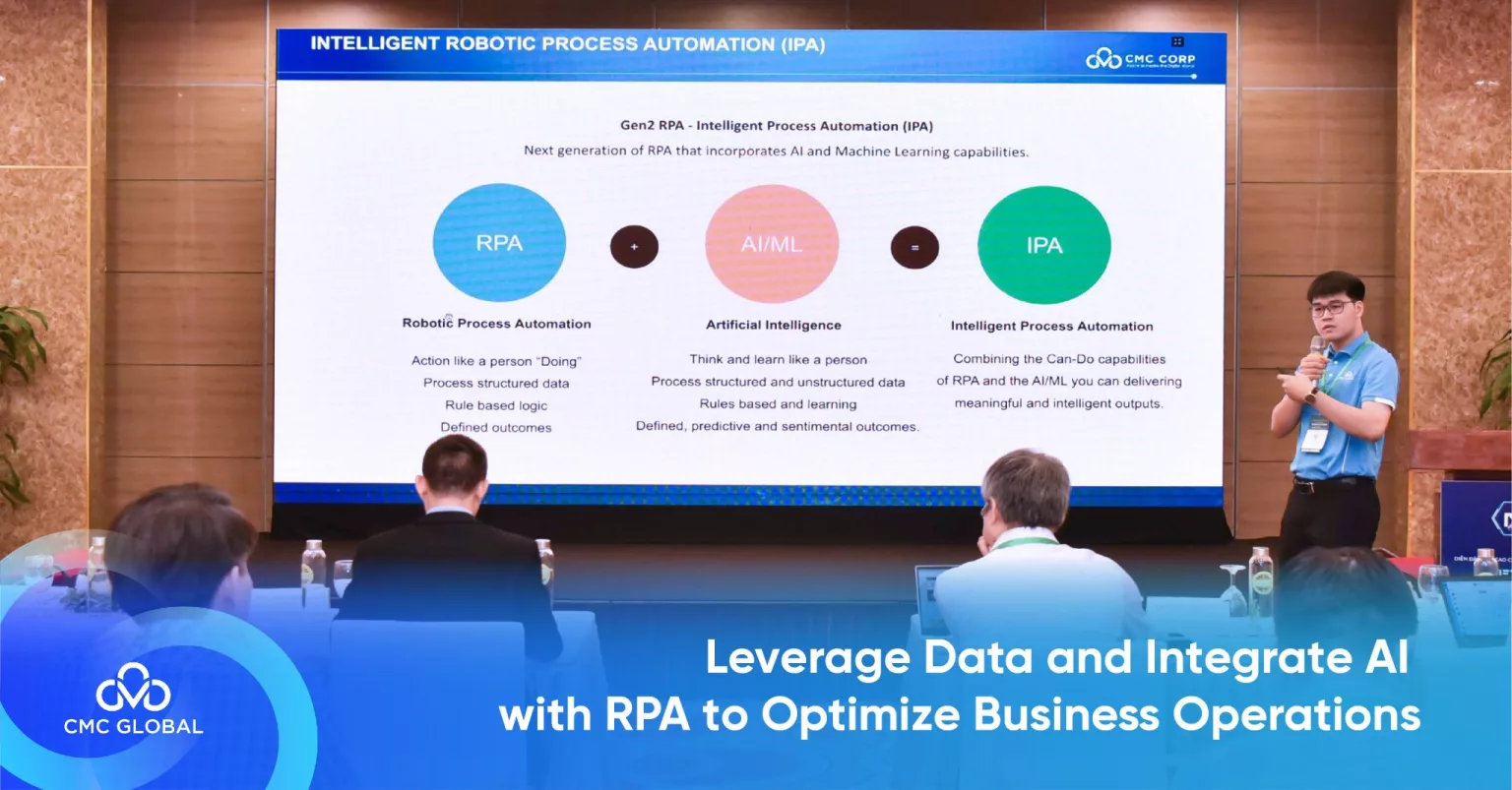The whole fancy pictures and RPA best practices on the Internet may make you think it’s something like a slam dunk: bam, you got everything covered and save a lot of money for the system, personnel, maintenance, and so on. But in fact, there are several ways that cause RPA failures.
Gina Schaefer, the U.S. intelligent automation practice lead at Deloitte, suggested that the root cause that needs to be addressed is the lack of overall vision and direction for the program, which is eventually defined by the leadership and embraced by the business. This means that these RPA failures can be avoided with clear direction and guidance, according to her, “Scaled automation programs have proven time and again to drive impressive impacts and measurable financial returns”
So, let’s check out 9 types of RPA failures that many enterprises run into when launching RPA programs and tips to avoid them correctly with CMC Global.
1. Business Governance

Not only in terms of RPA failures, but most failures can root in a lack of governance or wrong strategy. That means when a business points to the inability to deliver sufficient ROI, business owners may need to rethink if they have invested in appropriate management and oversight for the program or not.
When RPA was surrounded by significant hype when it was first introduced, people believed their business workforce could attend a few training courses to generate extensive automation to scale a program, with or without the support of the IT group or service provider. It was a mistake, as they may not have approached the program with the rigor it required.
2. Wrong Automation Candidate Choices
RPA projects might fail to produce sufficient ROI because business owners might choose the wrong automation candidate. When it is somewhat easy and quick to automate basic tasks, the route to enterprise automation is rougher than they might think. As Schaefer said, “Just because you can automate something doesn’t mean you should,”. Many managers just don’t evaluate the benefits against the true TCO.
In fact, easier task automation can only create incremental value relevant to a single user. What you should do, is adopting a value-driven approach that sees automation as a tool to enable holistic process transformation rather than discrete task automation. This way, the automation bot can create a major impact and deliver true value to an entire function, not tweak tasks on one individual’s desktop.
3. Management challenges

On paper, once the bot is built, the work is done, and it will run autonomously with no guidance. And yet, in reality, automation is more like a human worker who is a new employee rather than a piece of software. That means it will face many different scenarios in its early days in production that it did not see in the training.
Like a learner, it must be fed enough scenarios to function on its own smoothly. That is why while a comprehensive development model may create some degree of flexibility, nearly every automation requires a level of retraining to the point when it has operated long enough to face enough scenarios. And while your new employee might be too shy to get up and have a coffee break, automation requires updates frequently. This means the people behind it need to ensure it is optimized to deliver maximum results. At the same time, monitor and report its impact on the business process holistically to see the true value it brings out.
4. Scaling challenges
Any technology has a point of diminishing returns from a scaling perspective. So even though bots can be a great stopgap measure for scenarios that involve copying data from one application/ system to another, there are RPA failures related to scaling challenges compared to direct API integrations. This means as the information sets and data moves frequency increase, the bots must consume a similar growing amount of resources. Ans this will somehow makes the data flow slower and less efficient.
You can avoid this mistake by reducing the frequency of data breadth and depth that is moved by the bots or changing to a more direct integration outside of the bot technology. Don’t let the glimpse of success for quick implementation ability blind you. Eventually, you will realize that you need a more forward-looking monitoring and management policy to identify when moving from a bot to a more integrated process makes sense and plan it carefully with the right strategy and vision.
5. Shadow deployments
To avoid RPA failures, it’s important to set guardrails for bot deployments so that frontline users are less prone to making mistakes. When bots make it easier for people who are not part of the core development team to create code, this can lead to shadow development in organizations and a lack of oversight.
When everyone can create a bot, the ease of bot creation and deployment can be deceptive. But, without the backing technology and process, the bot is likely to cause more headaches and workload, eventually. So, like any other technology, there needs to be proper management, monitoring, and logging around the bots.
Another thing you can do when determining if a task is RPA-suitable, it’s important to ask the IT Department questions about the variability and repeatability of that task before assigning a bot to it. The IT teams or the outsourced third party should work directly with business users to clearly communicate that RPA is only one tool in their IT toolbox.
6. Unrealistic expectations

In every Why XX fails? Of CMC Global, the number one top reason attributed to any tech failures is unrealistic expectations. Many projects begin with hopes of instant gratification, an innovation, a money-saver that can cut off the burden of most manual work – believe us, this kind of delusion still exists. Some of the results of these types of RPA failures can be an RPA environment established with flaws, poor designs as a result of poor delivering/ unclear requirements, and automated processes that are not tested with production data.
The impact of RPA implementation failures is especially destructive when an organization is just starting off with RPA. Early failures include flawed infrastructure build-outs, poor requirements gathering and designs, and perceived failures created by unrealistic, early expectations. The impact here is arguably the greatest since RPA can become branded as an abject failure within the organization.
7. Siloed RPA deployment
Another culprit behind most digital transformation project failures are the people. Imagine those who rely on the program don’t understand how it operates or feel left out of the planning process. They are the ones using it, and their insights, demands, and requirements are chopped livers. This can be the worst case.
To avoid these mistakes, try to involve nontechnical employees who either appreciate being involved in bot development or have insight into how automation technology can advance business goals. This helps mitigate the risk of RPA failure for several reasons. For example, it lightens the workload placed on specialized developers and helps with budgets and recruiting efforts in the process. They also make the bots more aligned with the way the business works. After all, who knows the processes better than the people who work with them every day?
8. Poor change management communication
It’s also important to train employees’ skills and their ability to navigate the bot culture. What to do is ensure your employees understand how to operate RPA technology, how to build bots, and how to perform their new, bot-enhanced roles.




